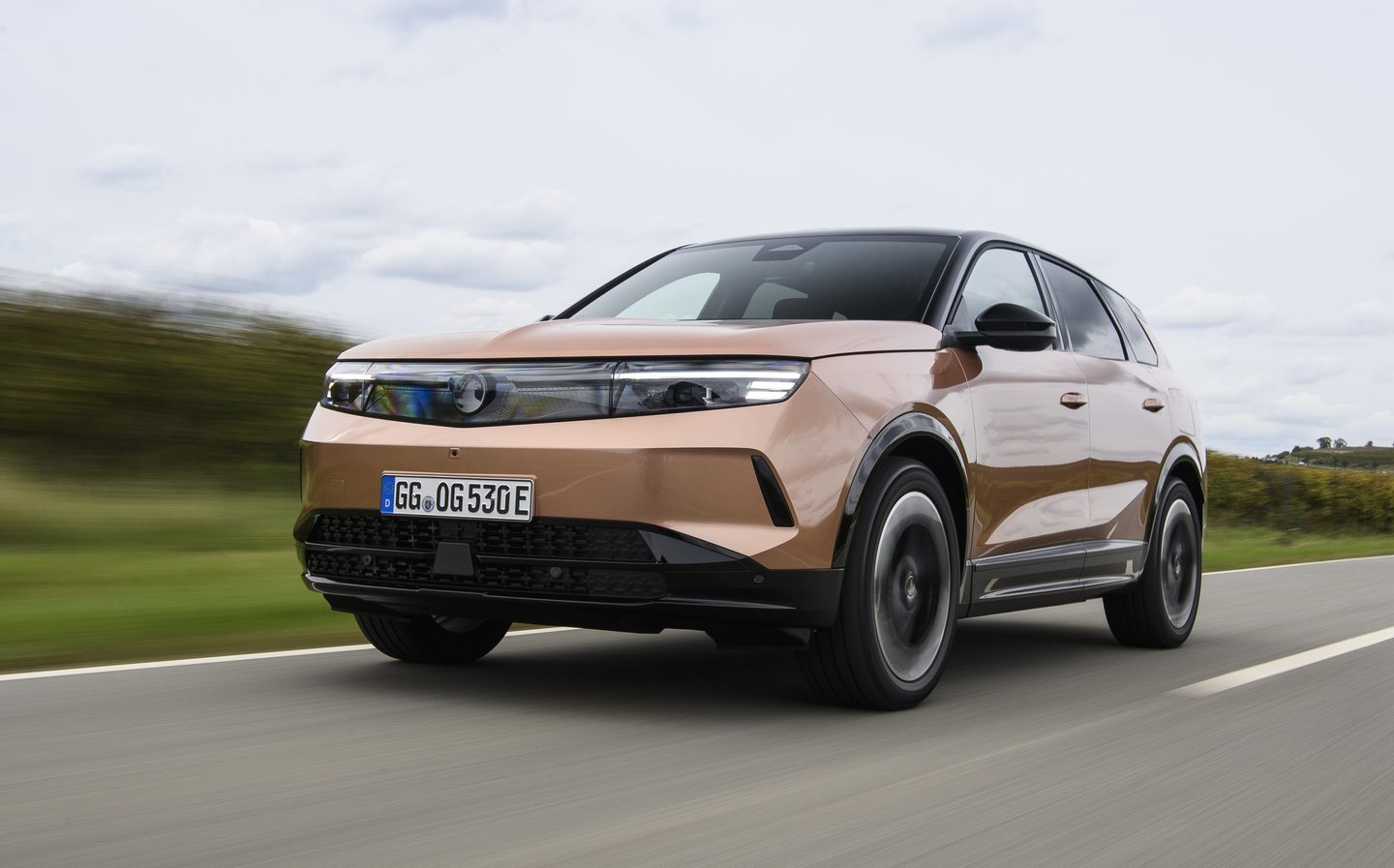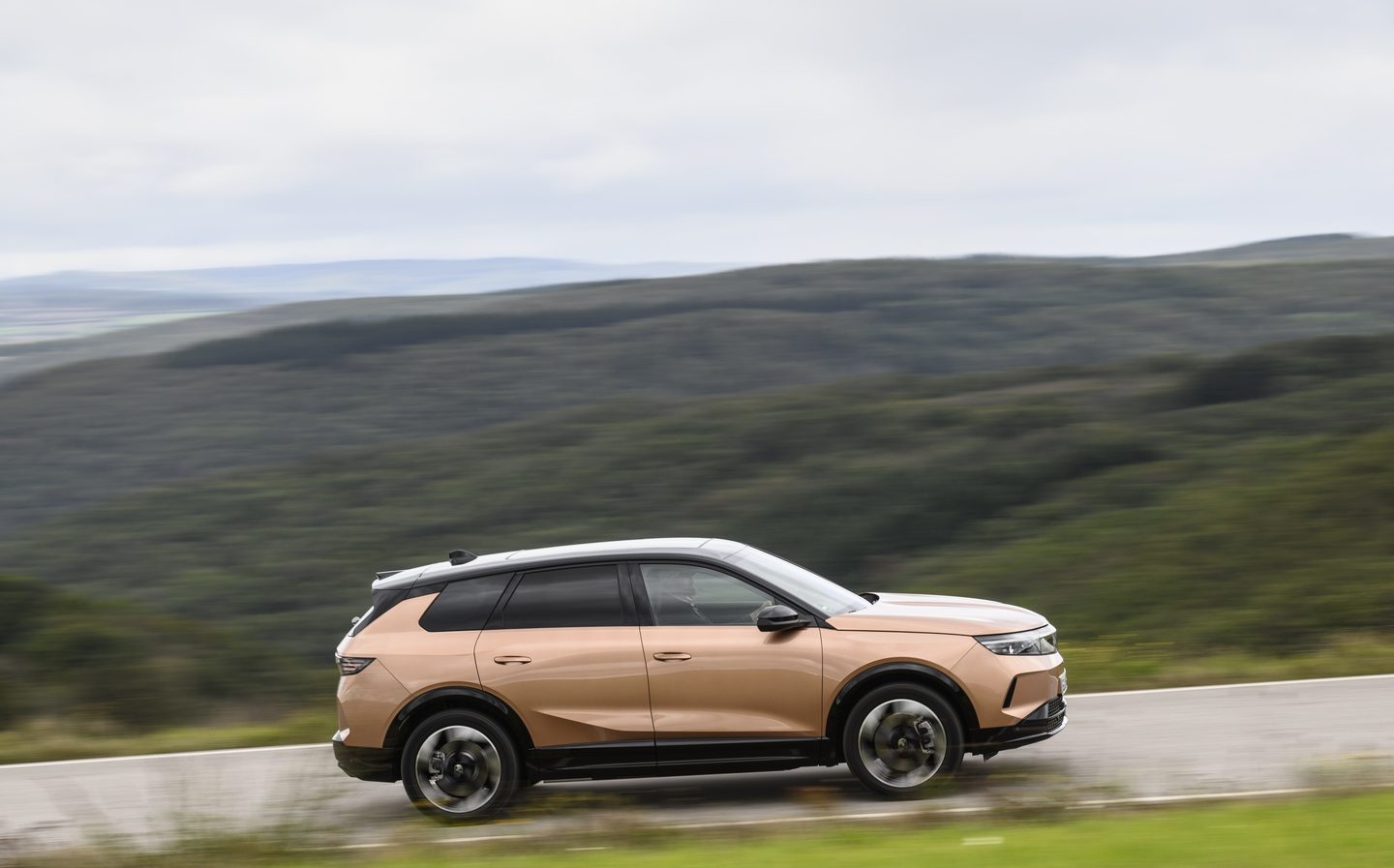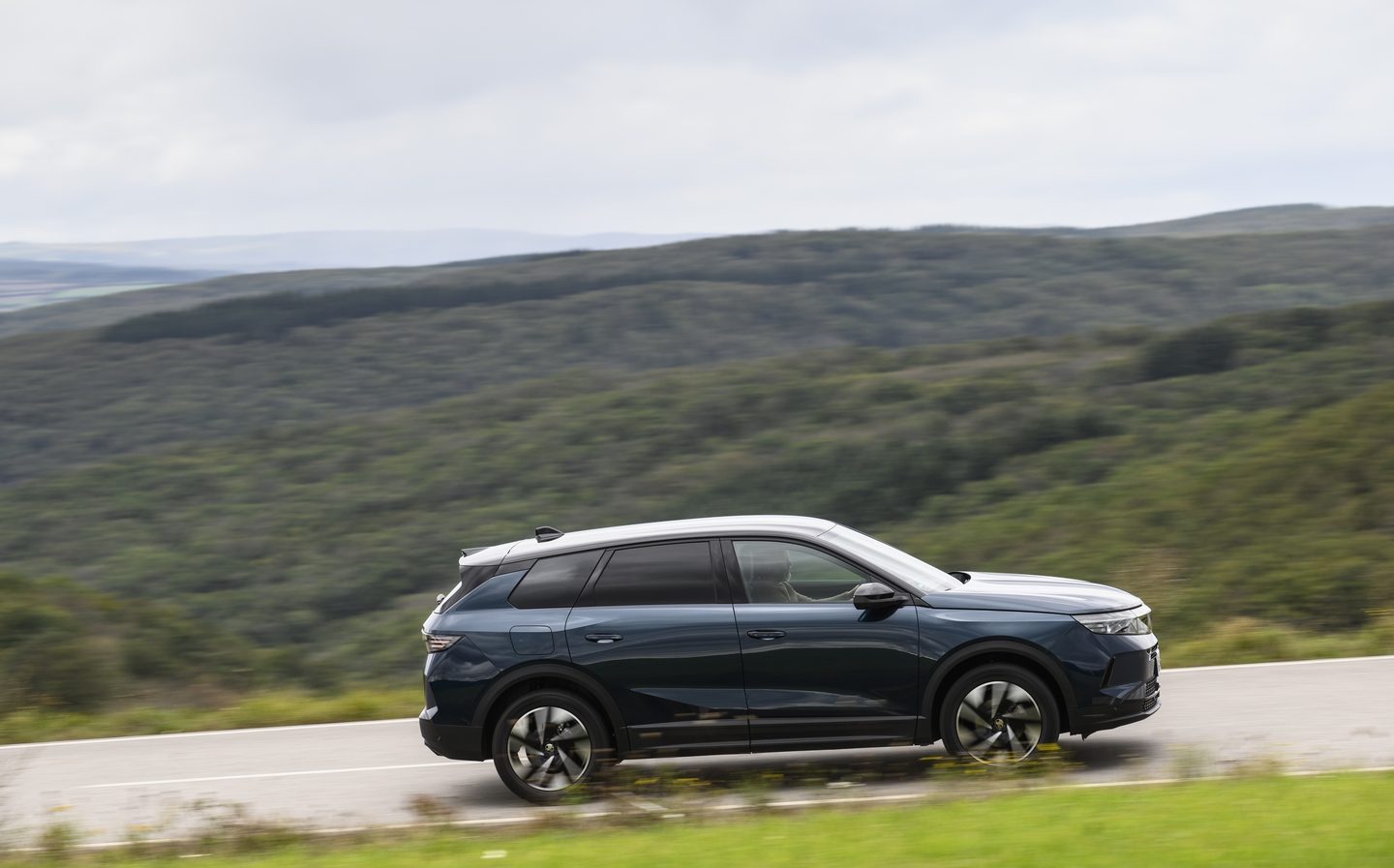Vauxhall Grandland 2024 review: Electrified SUV needs more than fancy lights and decent range
What is this car’s clear USP?
Lights. That would appear to be the new Vauxhall Grandland’s biggest talking point. On the mid-spec GS version and the range-topping Ultimate model, there are Intellilux matrix headlights which feature no fewer than 51,200 glittering LEDs.
These advanced headlights perform a welcoming dance routine, with triangular points of light flitting from side to side in front of the car and then coalescing into the main field of illumination when you unlock the Grandland. They can cleverly dip certain parts of their beam around objects, such as other vehicles and cyclists, so not to dazzle and, according to Vauxhall, are bright enough to “literally” turn night into day. Which is an amazing physics-defying trick, we’re sure you’ll agree.
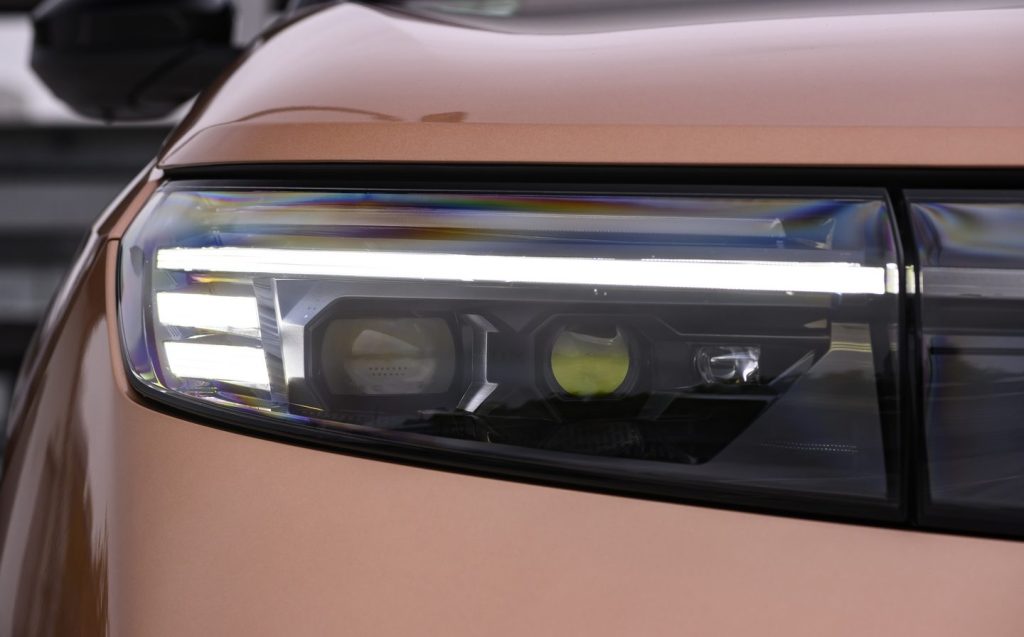
That’s not all. Again, on the GS and Ultimate trims — but not for the entry-level Design specification — the Grandland gets Vauxhall’s eye-catching 3D “Vizor” front end, complete with a full-width light strip and even an illuminated Griffin corporate logo. This is a feature mirrored at the rear, where the word “Vauxhall” gets to glow red at night.
Now, admittedly, there are plenty of cars with fancy-dan matrix headlights with thousands of intelligent LEDs within, and while Vauxhall would like to claim the light-up logos are something special, the Volkswagen Group, for example, has been using such technology for some time now.
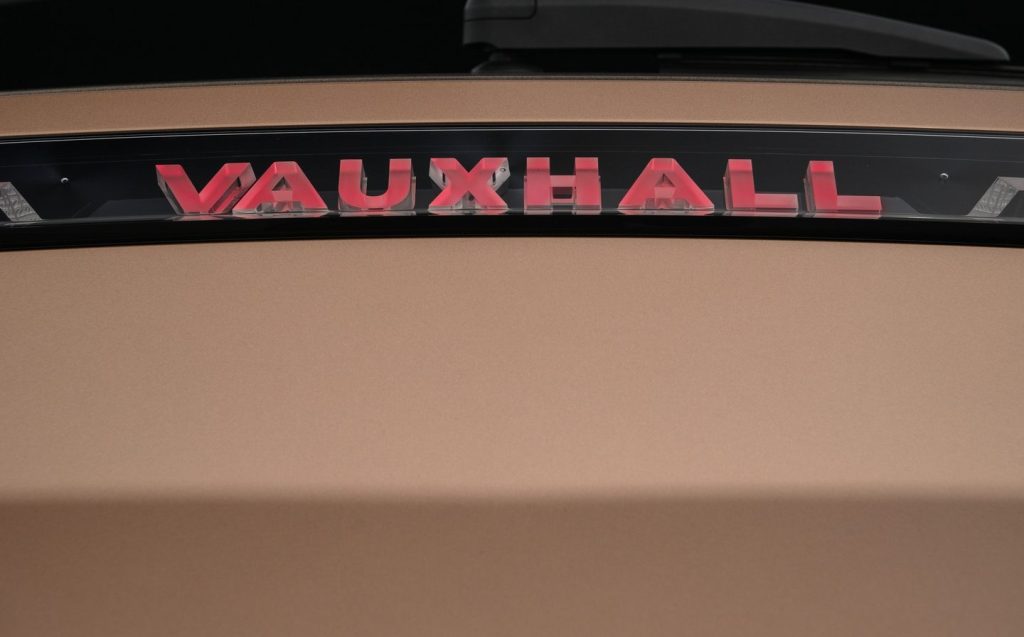
So then what is the Grandland’s next biggest selling point? Well, it’s a long-range vehicle if specified as the Electric model. Essentially, underneath the skin are the same underpinnings as you’d find in a Peugeot e-3008 (Peugeot being part of the same automotive group, Stellantis).
And while the electric Vauxhall launches with a 73kWh-capacity battery and 210bhp motor, allowing for a range of up to 325 miles (it dips to 318 miles on the flagship Ultimate with its 20in wheels), other derivatives of the electric variant will be along soon with either two motors for greater performance, or a massive 97kWh battery pack and claimed 435-mile one-shot driving capability. As usual, we have to mention the caveat that these are the lab test claims, and in the real world (and especially cold weather), range is likely to be lower.
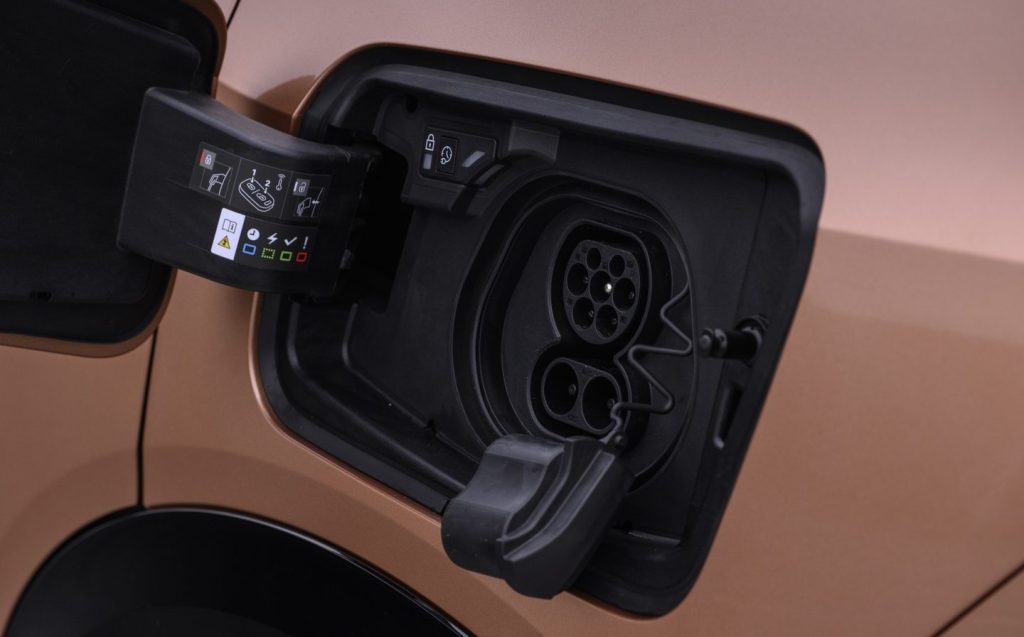
There is no doubting those are impressive numbers, though, and in the case of the upcoming 97kWh version, they do place the Grandland Electric right at the top of the class for electric driving range. Or, at least, they do alongside the related e-3008 with the same powertrains at its disposal.
But beyond that we’re struggling to see what is the clear remit of the Vauxhall Grandland, within the wider Stellantis family. Vauxhall doesn’t appear to be Stellantis’ sporty brand, nor its value brand, nor its comfort brand, nor its prestige brand, nor its design brand. It just… is.
This is not to say the new Grandland is a bad car, either as this Electric version or as the alternative hybrid-powered model with its electrically assisted 1.2-litre three-cylinder petrol engine. In fact, it’s a vast improvement on the old Grandland it replaces and a rather pleasant family SUV, all told.
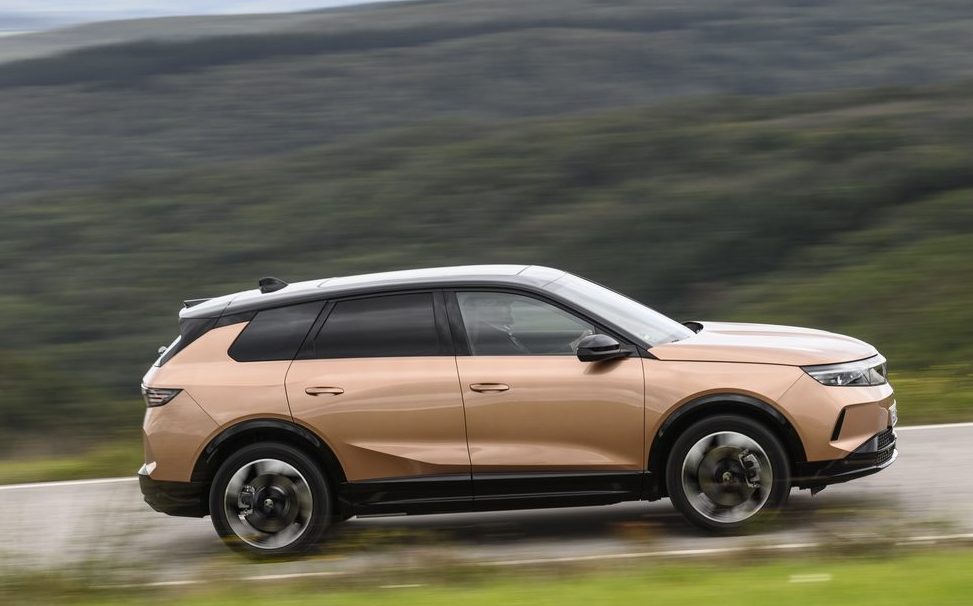
Yet nowhere does it stand out among an increasingly talented, not to mention numerous, array of rivals. It’s not just the Peugeot e-3008 and 3008 lines it has to see off, for instance; competitors out there for the Vauxhall include the fancier Tesla Model Y, Polestar 3 and Volvo EX40, plus the upcoming Ford Explorer and Kia EV5, not to mention the established Volkswagen ID.4 and ID.5 models, and their spin-offs in the form of the incoming Cupra Tavascan and the outstanding Skoda Enyaq iV.
It’s that Enyaq which represents the biggest headache for the Grandland. The Czech car might not have the outright range of the Vauxhall, but it’s not far off and in many other respects — cabin quality, ride comfort, interior space, styling, handling — it feels the superior machine, despite having been around since 2020.
But let’s get back to focusing on the Vauxhall’s strengths before we conclude this review. Visually, the new Grandland is inoffensively handsome without being particularly memorable, sparkly LED headlights and illuminated logos or no.
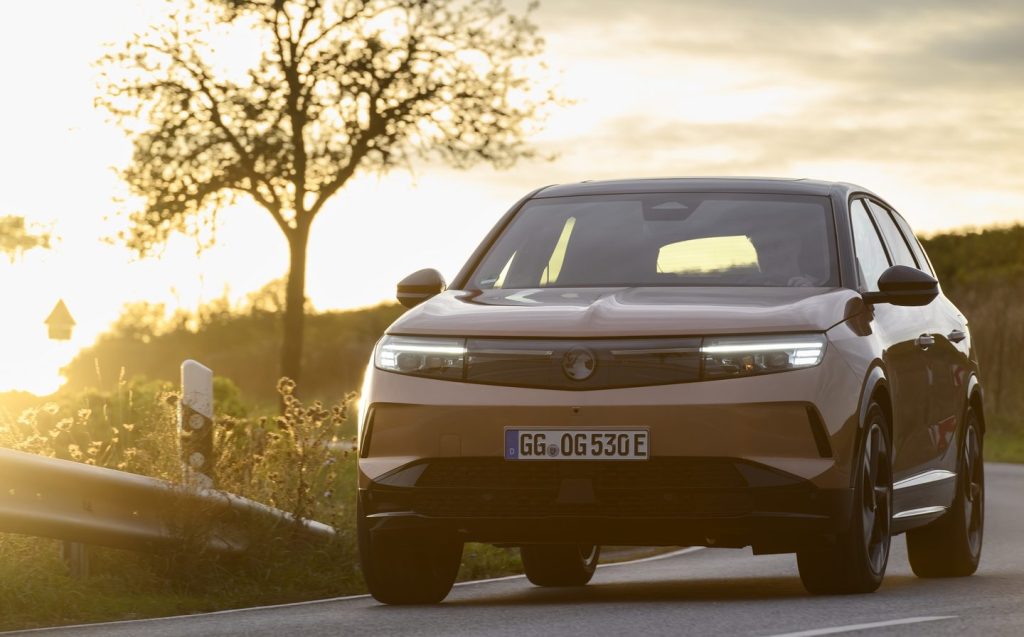
The “Vizor” style gives it a strong front end and the Grandland’s flanks are nicely chiselled, and it at least looks vaguely like the car it supersedes to give it some design continuity in the minds of prospective buyers, who very well might be Vauxhall loyalists who have owned the old Grandland at some point.
However, generally the Vauxhall’s bodywork isn’t very daring, although it is commendably aerodynamic — this should theoretically allow the Grandland Electric to make the most of its battery’s power in terms of range, while also allowing it to cut through the air more quietly.
Inside, it’s again a marked step up from Vauxhall’s cabins of recent years, which tended to favour an overwhelming use of black or very, very dark charcoal grey surfaces everywhere you looked.
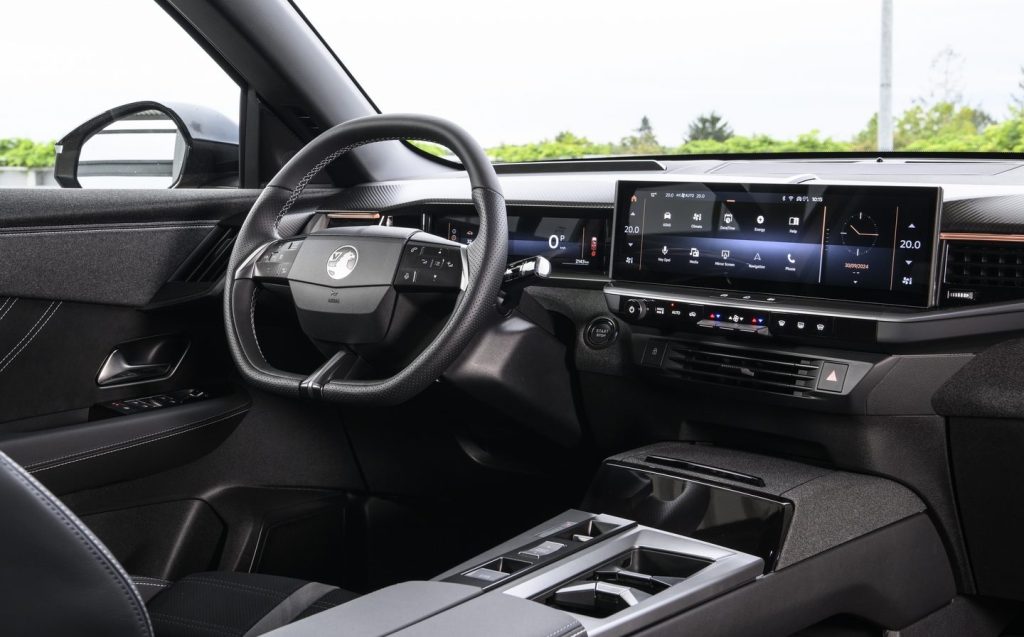
Not so inside the Grandland, with various different textures, materials and colours used to give the passenger compartment a pleasing ambience.
It may also appeal to those who can’t quite gel with Peugeot’s iCockpit interiors, though the Vauxhall’s cabin is not as appealing to look at as the interior in the e-3008 upon which it is so heavily based; the Grandland’s fascia is a less adventurous, less premium-feeling piece of work.
Some may find it easier to use the Vauxhall’s interface, though, in which the company has admirably kept some physical switchgear for key interior functions — most notably for the climate controls.
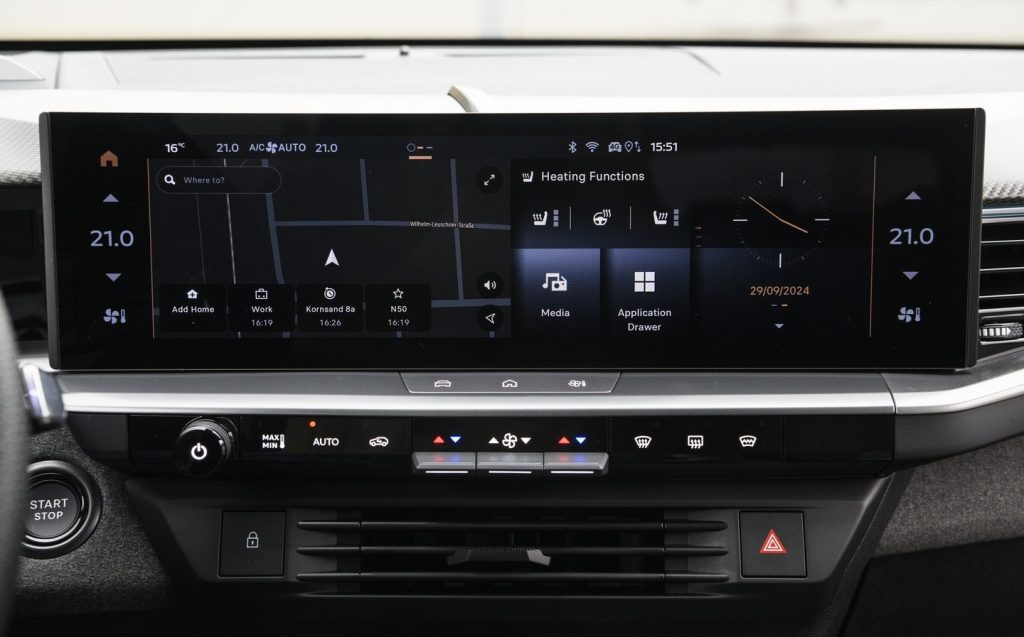
Yet that letterbox 16in touchscreen for the main infotainment (base Design cars make do with a 10in item) is incredibly wide but rather shallow in terms of height, which restricts usability. Unless you have the navigation in perspective mode, which not everyone likes, and if you also have the screen zoomed in to see greater road detail, you’re hard-pressed to see what the next turn coming up on your route looks like until you’re almost on it. In the Peugeot equivalent, a smaller 12in screen nevertheless gives a better mapping view.
Still, the 10in driver’s instrument cluster and the smart-looking head-up display (only fitted to the Ultimate) are both clear and informative, so the technology in the Grandland is generally sound. And there’s lots of space in the interior, too.
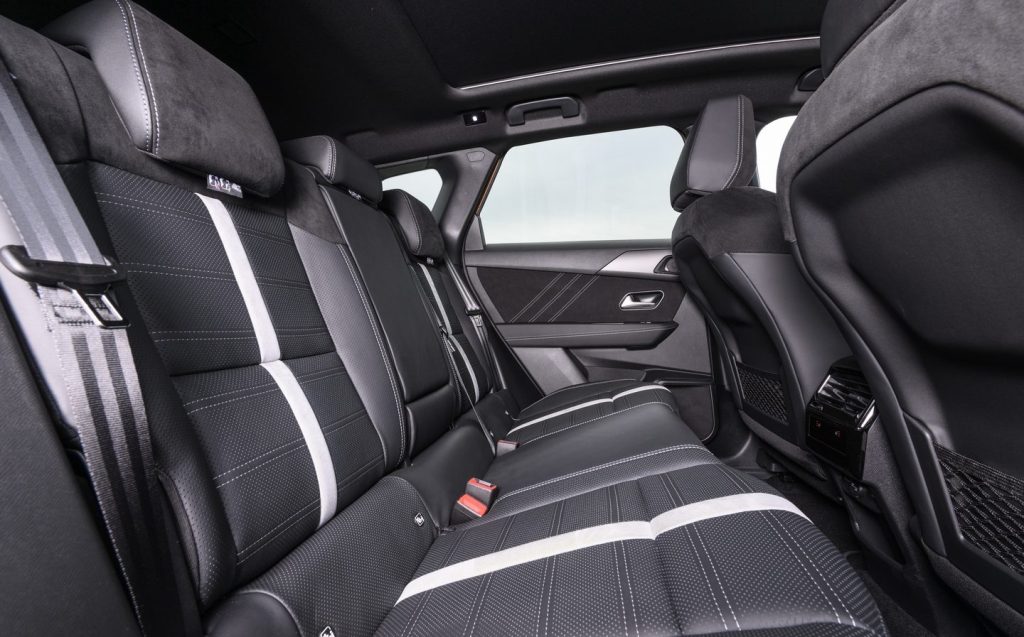
Leg- and headroom in the rear are decent with the front seat in position for a six-foot driver, while the boot is also pretty capacious, at 550 litres. That’s more than the e-3008 with its coupé-like roofline and 520-litre cargo bay, but less than the upright Enyaq’s 585-litre boot.
Vauxhall further cites the fact the Grandland has 36 litres of storage in the passenger compartment, including a 12-litre refrigerated armrest cubby and 3.7 litres of clobber-swallowing space in each of the front door pockets. For reference, a volume of 36 litres is about as much as you’d cram into an budget-airline-satisfying wheeled cabin bag.
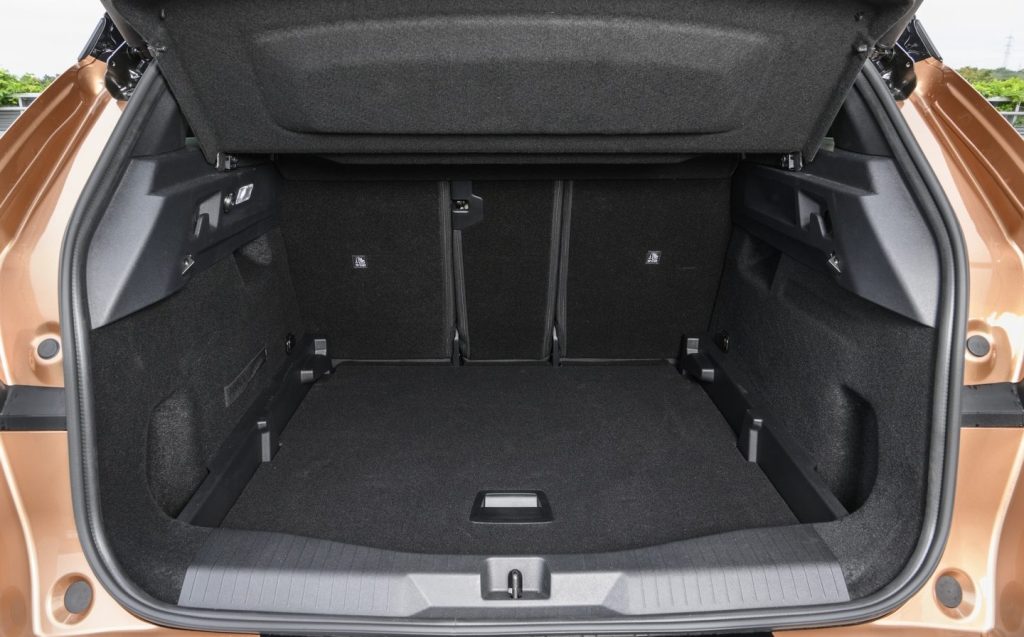
To drive, the Grandland Electric is unobtrusively unremarkable. It weighs a hefty 2,132kg as this zero-emission model, so the handling is acceptable without ever being exceptional. The EV has more advanced multilink rear suspension than the hybrid Grandland (a torsion beam for the engineers out there), and that allows the front and rear wheels to be pushed further apart on the Electric (its wheelbase is 11mm longer).
But the sheer mass of the car blunts the fun in the corners, while the steering is rather light and uncommunicative. The Vauxhall will grip and go if you show it a twisting road at reasonable speed, although we cannot pretend it is in any way sporty or dynamic to drive in such circumstances.
It is decently comfortable, although not perfect. Our German test car was broadly analogous to the Ultimate on 20in wheels that we’ll get in the UK, and it had something called frequency selective dampers (FSDs) as a small nod towards suspension with a greater operating bandwidth.
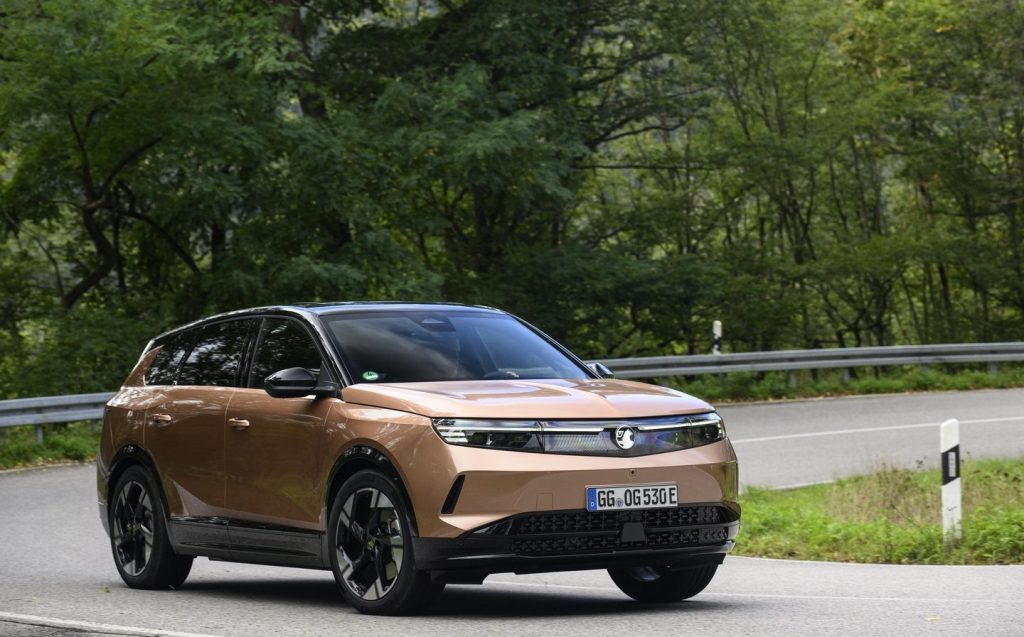
Yet that doesn’t stop the SUV often noisily bashing around town on poor surfaces, the big alloy wheels picking up too many imperfections in the tarmac and amplifying them into a brittle ride.
Once you’re moving faster, the Grandland Electric manages to settle down on its springs a little better, but then you’re treated to more noticeable levels of road noise; not a terrible amount, but enough to comment on. Wind noise, though, is commendably subdued.
And the Grandland never feels in the remotest bit fast. That’s not the be-all and end-all for modern-day drivers on congested roads, naturally, but electric cars are often chosen for their strong low-speed acceleration. The Vauxhall, even in Sport mode with its full 210bhp, always comes across as a bit lethargic and, well, heavy. Which it is, of course.
The worrying thing for Vauxhall is that, driven back-to-back with the 134bhp 1.2 hybrid version (pictured below), it’s the petrol-fuelled Grandland which is arguably the sweeter to drive.
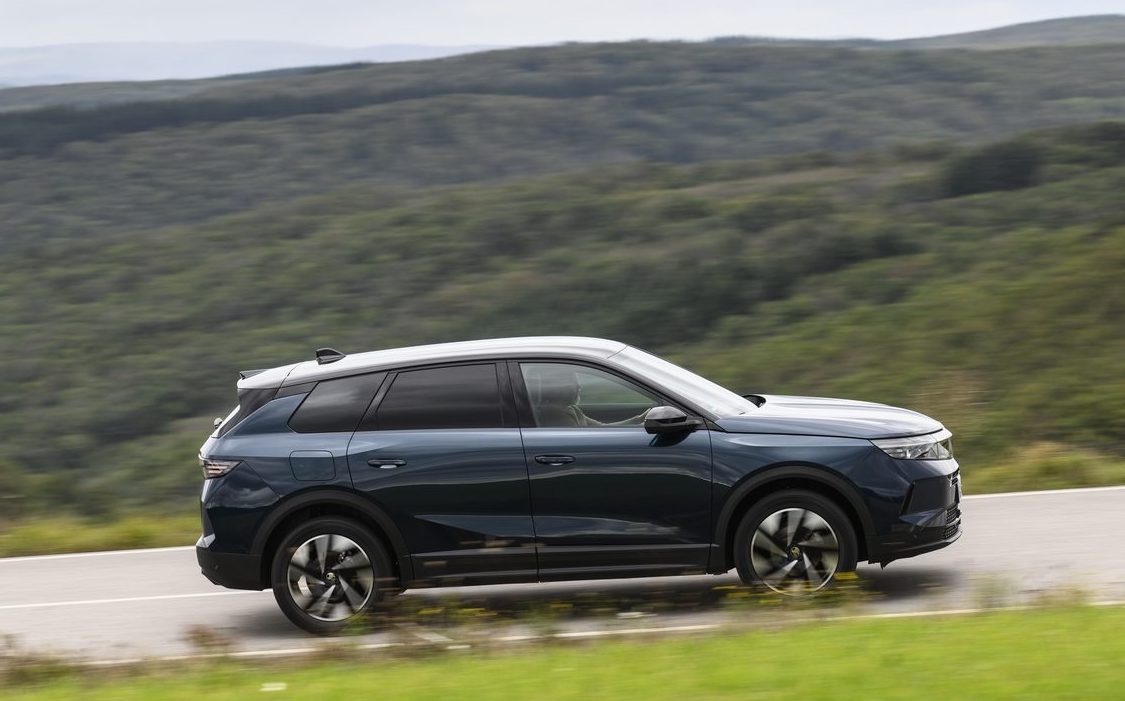
It’s much lighter, for a start, coming in fully 532kg trimmer than the Electric. That’s like saying you could stuff three or four decent-sized rugby prop forwards into a Grandland hybrid before it becomes as heavy as an empty Electric model.
This translates into a smoother ride and comfier manners most of the time. On the downside, the hybrid feels even slower than its zero-emission counterpart.
Obviously, the hybrid isn’t as cheap to run or tax as the Grandland Electric, and it has its own issues with the speed of the gearbox’s changes when you need extra acceleration. But with its supposedly less-advanced rear suspension, it was the hybrid Vauxhall we enjoyed driving more, conceding that it still isn’t something exciting to steer in the wider automotive context.
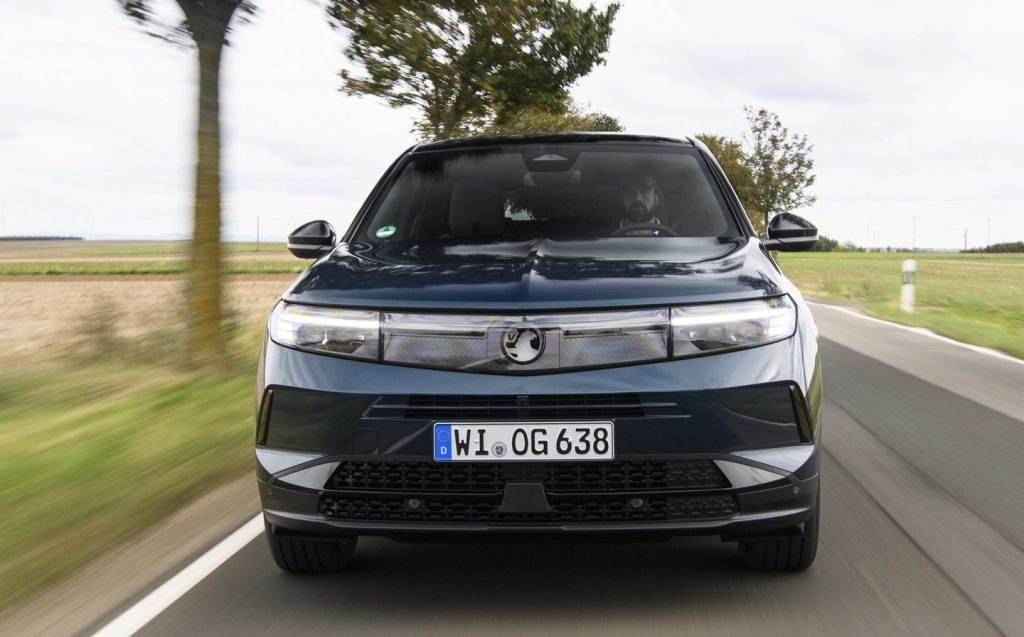
There’s also, as ever, a price to pay for doing the right thing, ecologically speaking.
Where the Grandland hybrid starts at a reasonable-looking £34,700 as a Design and rises to £38,400 as an Ultimate, the Electric kicks off at £40,995 and culminates at £45,195.
Two things in the Grandland Electric’s defence here are that Vauxhall says you can achieve monthly price parity with the hybrid on its PCP deals — albeit they require you to finance the Electric over five years, as opposed to four with the 1.2-litre model — and those headline purchase figures are less than the Peugeot e-3008’s, which comes in just two trim grades at £45,950 and £49,750 respectively.

But the Enyaq is broadly on price par with the Grandland, the (slightly) longer range and more interesting to look at Explorer isn’t too much more, and a 373-mile Tesla Model Y costs from £46,990.
Which leaves us feeling somewhat ambivalent about the new Vauxhall Grandland. There’s no arguing it’s much better than the old car and, in general, it’s a polished and capable machine. The only real drawbacks we can think of are that it has inert handling, an infrequently leaden ride quality and a dearth of straight-line performance.
In other regards, it’s all perfectly fine. But the worry is that fine just won’t do in this cutthroat section of the market. There’s nothing particularly new that the Vauxhall does which challenges the best in the sector, and if it were the only model of car in this class with a purported 400-mile-plus range then it would at least have that on its side.
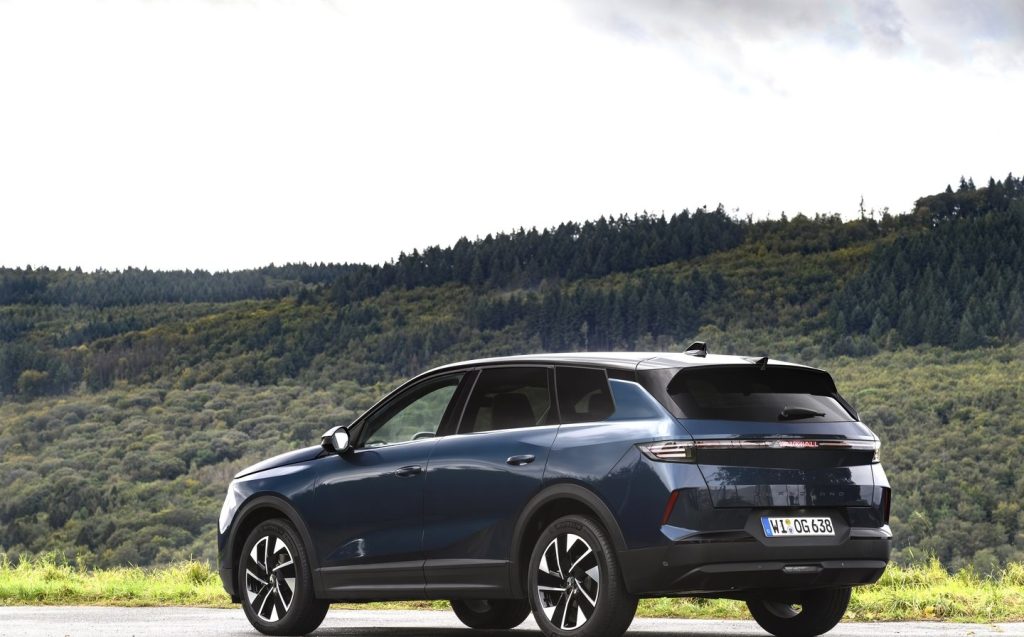
But it’s not — the Peugeot e-3008 does exactly the same thing, and was there first. And it looks more interesting, inside and out. So, we can’t help but feel that the Vauxhall Grandland needed something beyond a flashy light show when you unlock the car to help make it stand out more, to entice conquest customers from other marques to take a chance on this new zero-emission family car.
As it is, it simply feels like it is already just one of the herd in the electric SUV class.
Related articles
- If you found this review of the new Vauxhall Grandland SUV interesting, you may like to read our review of the updated Vauxhall Corsa Electric
- Also check out our first drive review of the electric Vauxhall Astra Sports Tourer
- And did you know Vauxhall is planning a £22,000 city EV?
Latest articles
- Seven great automotive events to visit this summer, from F1 to art and champagne
- Watch new Porsche 911 GT3 smash Nürburgring record for manual cars
- Skoda Elroq 2025 review: Czech carmaker can’t seem to miss with its electric family cars
- Five best electric cars to buy in 2025
- Should I buy a diesel car in 2025?
- F1 2025 calendar and race reports: The new Formula One season as it happens
- Zeekr 7X AWD 2025 review: A fast, spacious and high tech premium SUV — but someone call the chassis chief
- Denza Z9GT 2025 review: Flawed but sleek 1,062bhp shooting brake from BYD’s luxury arm
- Extended test: 2024 Renault Scenic E-Tech review


